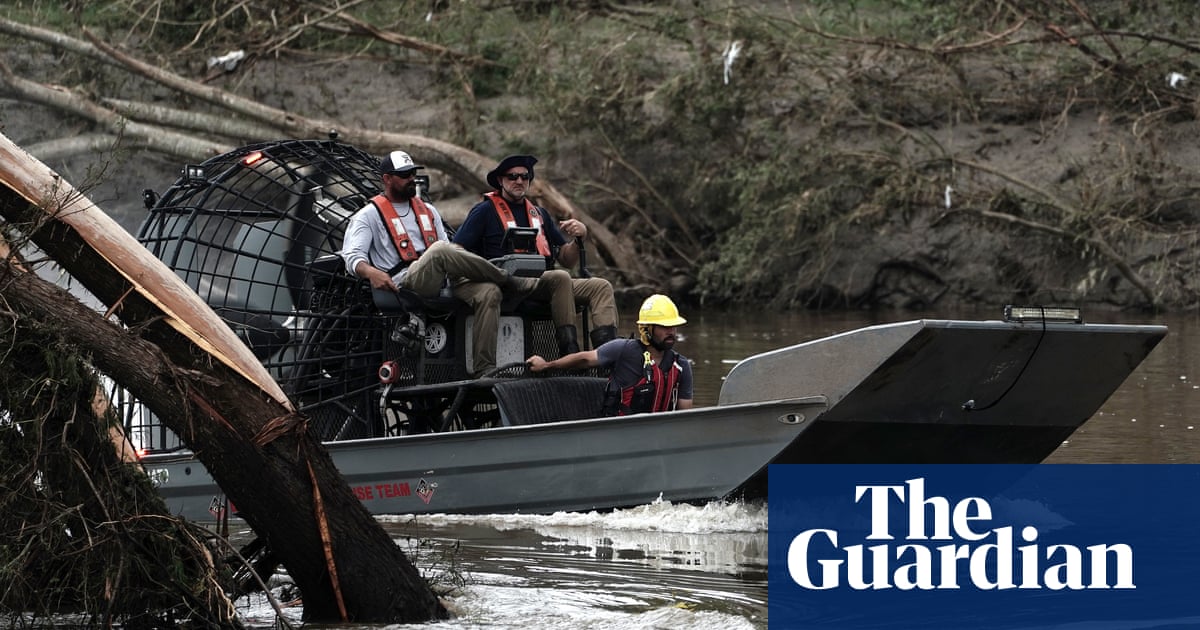The Deadly Texas Floods: A New Norm Amid Dismantling of Essential Federal Agencies
The recent floods in Texas have claimed the lives of over 100 individuals, with many more still unaccounted for. This disaster swept through the Hill Country, an area primarily known for its arid landscape, erasing entire holiday camps and homes in a relentless torrent following a seemingly typical storm. Experts warn that such catastrophic weather events may be signals of a new, dangerous norm in the U.S., exacerbated by federal downsizing of agencies like FEMA and the National Weather Service (NWS) under the Trump administration.
A Storm of Misfortune
The flash flooding occurred late one Friday night, transforming tranquil regions into disaster zones where entire camps, such as Camp Mystic – housing approximately 700 girls on a recognized floodplain by the Guadalupe River – were caught off guard. Despite existing early warning systems, the evacuation efforts fell short, leading to tragic loss of life. The chaos surrounding the event raises pointed questions about the preparedness of the agencies designed to protect citizens in such emergencies.
Agency Dismantling Leads to Inadequate Response
Experts like Samantha Montano, a professor of emergency management, highlight that the Texas floods epitomize the kind of extreme weather events climate scientists have been warning about for decades. She emphasizes that ongoing cuts and turmoil instigated under Trump’s leadership at FEMA and the NWS have notably weakened the foundation of emergency management in the U.S. “If you eliminate those preparedness efforts… then the response will not be effective,” she asserts.
FEMA, established in 1979 to support states in handling major disasters, has faced targeted efforts to undermine its effectiveness. Recent actions included threats to dismantle the agency completely, despite ongoing natural disasters that have highlighted its essential role. Under the current administration, significant staff reductions at FEMA have weakened its ability to provide timely and efficient disaster responses.
The Impact of Staff Reductions
Reports indicate that more than a third of FEMA’s permanent workforce has been let go or accepted buyouts, stripping the agency of experienced leaders crucial for coordinating disaster responses. The fallout doesn’t stop there; the NWS, which relies heavily on expertise for accurate weather forecasting, has also seen significant staffing cuts. This has left critical meteorological offices across the nation under-resourced, particularly those in flood-prone areas like Texas.
Severe weather events demand not just adequate manpower, but also the kind of continuous monitoring the NWS provides. With a notable reduction in round-the-clock staffing and routine weather monitoring, the agency’s ability to issue timely warnings has been compromised. Tragically, early prevention measures that could save lives have been jeopardized.
Policy Decisions and Budget Cuts
Policy shifts have also fueled the crisis. The recent budget signed by Trump cuts $150 million from the National Oceanic and Atmospheric Administration (NOAA), targeting funds that enhance weather forecasts. This is compounded by a 56% reduction in funding for the National Science Foundation, which plays a pivotal role in improving early warning systems. Alan Gerard, a former NOAA leader, expressed alarm over these budget cuts, noting they could effectively halt progress on enhancing warning systems against disasters like those seen in Texas.
Local Voices Amid Federal Silence
In the aftermath of the floods, local leaders and officials have pressed for better early warning systems to safeguard communities. Yet, they find themselves at odds with the administration’s approach, as they navigate cuts that diminish the capability of agencies meant to protect citizens. Texas Senator Ted Cruz has advocated for improved warning systems, despite previously supporting cuts to NOAA’s forecasting improvements.
The uncertainties grow as David Richardson, the acting FEMA administrator, has been criticized for lacking emergency management experience and failing to provide clear communication during the crisis. This absence of leadership from FEMA raises concerns about the effectiveness of future emergency responses. Key personnel with invaluable institutional knowledge are absent from the agency, fostering a sense of distrust and confusion among local leaders and communities in crisis.
Climate Crisis and the New Normal
As the human-induced climate crisis looms larger, the environment has shifted into a more volatile state. The Texas floods occurred in an era where atmospheric conditions are 7% wetter and temperatures are 1.5°C hotter than they would have been otherwise. According to Andrew Dessler, a climate scientist at Texas A&M University, every weather event now bears the mark of climate change, influencing everything from rainfall patterns to storm intensity.
In light of these developments, the Trump administration’s dismissal of expert advice on climate and weather preparedness raises serious concerns about the future. As communities grapple with the immediate aftermath of the devastating floods, the systemic issues at federal agencies may pose a long-lasting threat to the nation’s ability to respond to similar catastrophes in the future.
The Communication Void
In this tumultuous landscape, communication from FEMA has been sparse. Montano’s observations suggest the agency lacks a trusted voice, further complicating the already fraught emergency response landscape. With critical decisions being discussed, the absence of reassuring, authoritative guidance leaves communities wrestling with uncertainty and vulnerability.
As the nation reckons with the tragic outcomes of the Texas floods, it becomes increasingly clear that without robust federal support and investment in disaster preparedness, future catastrophes may yield even graver consequences. Communities across the United States anxiously await a resolution that could reaffirm their safety in the face of a warming planet.


